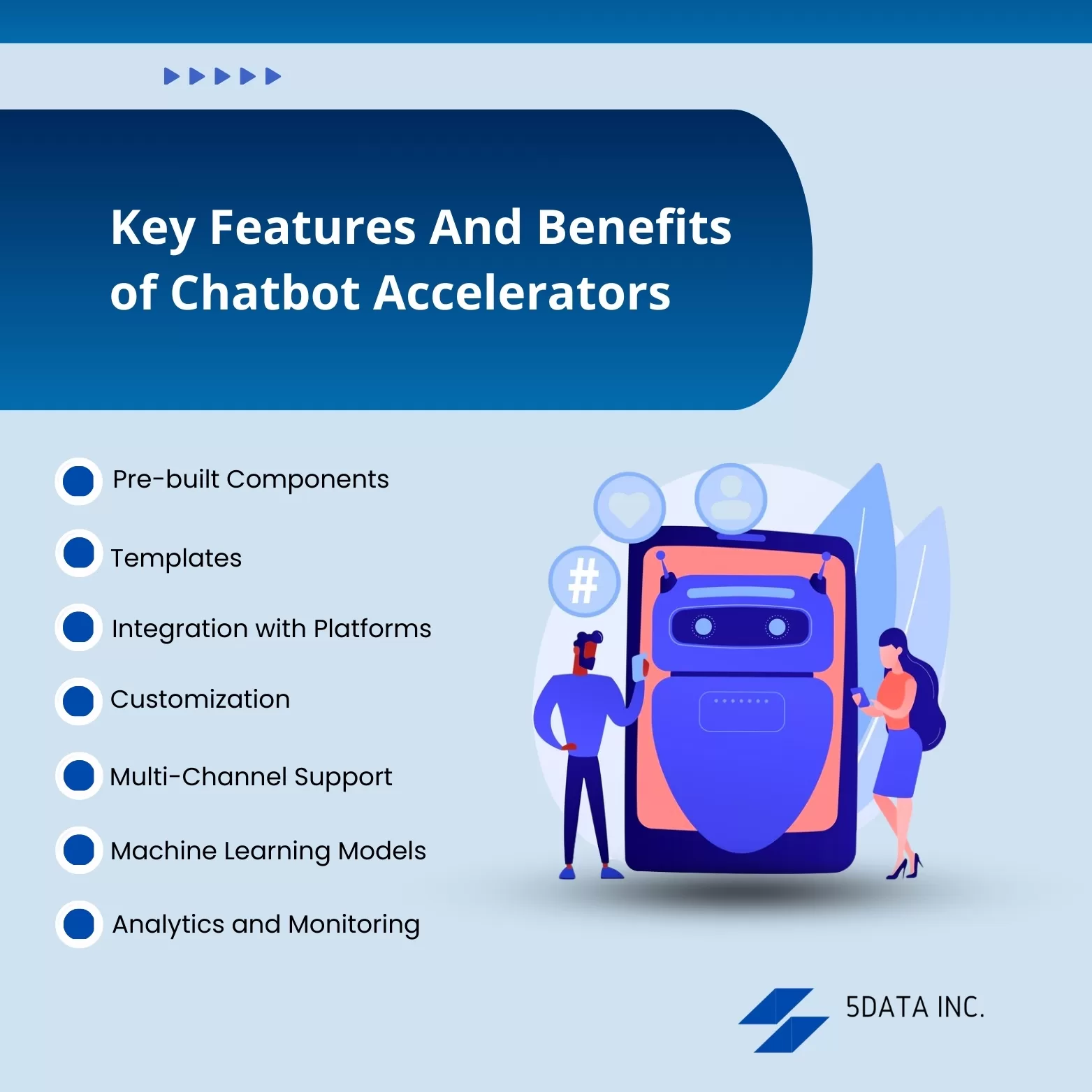Chatbots have come a long way since their unpretentious beginnings in the 1960s, evolving from basic conversational programs to sophisticated AI tools like GPT -3.
Joseph Weizenbaum’s ELIZA laid the groundwork, creating the illusion of understanding through pattern matching. Over the years, they have been upgraded, but it was the integration of machine learning in the 2000s that truly transformed them into AI tools.
From SmarterChild to voice assistants like Siri and Alexa, chatbots have revolutionized how we interact with AI tools.
Now, with advanced chatbot implementation like GPT -3 and accelerators, they’ve reached new heights of intelligence.
Evolution of Chatbots (Brief History)
- 1966: Joseph Weizenbaum introduces ELIZA, laying the foundation for bot development.
- 1972: PARRY, simulating paranoid schizophrenia, this new technology helped in mimicking human conversation.
- 1988: Jabberwocky pioneers natural language processing, learning from human interactions.
- 1992: Dr. Sbaitso, a commercial AI bot, uses digital speech synthesis for a mock therapy experience.
- 1995: ALICE employs pattern matching, winning awards for its human-like responses.
- 2001: SmarterChild utilizes artificial intelligence on MSN Messenger and AIM.
- 2006: IBM’s Watson competes on Jeopardy!, showcasing the bot’s potential for understanding natural language.
- 2014: Smart voice assistants like Siri, Alexa, and Google Assistant mark a milestone in AI bot evolution.
- 2020: Large Language Models like GPT -3 usher in a new era of advanced chatbot interaction.
Types of Chatbots
As businesses embrace the capabilities of AI bots, discussions around how different chatbots work continue to evolve. Below are some common types of chatbots that users can use to do repetitive tasks to enhance customer experience and data-driven services. Scripted or Quick Reply Chatbots- Basic in nature, these bots follow a predetermined decision tree.
- Interaction relies on predefined questions leading to the chatbot’s response.
- Similar to scripted chatbots, these AI bots prompt users to select options from a predefined menu.
- The user’s choices guide the chatbot in understanding and addressing customer needs.
- Slightly more advanced, these bots analyze user input and respond based on identified keywords.
- Customizable keywords and AI integration enable tailored responses, though they may struggle with repetitive queries.
- Menu-based is integrated with keyword recognition-based bots.
- Users can opt for direct question answering or utilize the chatbot’s menu if keyword recognition proves challenging.
- Advanced AI chatbot with a data-centric focus.
- Solutions are based on the context of previous conversations by analyzing data for a more personalized experience using AI & machine learning.
- Representing the future of chatbot technology.
- Utilize spoken dialogue as input, allowing users to engage through voice commands, creating a positive impact.
- Developed using text-to-speech and voice recognition APIs.
- For Example, Amazon, Alexa, and Apple’s Siri.
Incredible Applications of Chatbots
- Customer Support: Chatbots provide 24/7 assistance for common queries, offering instant feedback and cost efficiency.
- E-Commerce: Chatbots facilitate sales, transactions, and personalized recommendations in industries such as banking, travel, and retail
- Information Retrieval: AI voice assistants offer hands-free utility, finding facts, setting timers, and playing music.
- Education: Chatbots act as tutors, enhancing interactive learning experiences.
- Healthcare: In the medical industry, chatbots offer medical guidance, reminders, and emotional support, increasing access to care.
- Entertainment: AI companies offer chatbot Replika to engage in everyday conversations, providing companionship and connection.
Why Chatbot Accelerators?
The ideal AI bot is designed with the following features:- Reads your mind: It can predict what you want to ask before you say it based on past conversations and other data. It makes conversations fast and smooth.
- Speaks your language: It can be customized to match your brand’s tone and personality, making interactions feel friendly and familiar.
- Knows where to find answers: By using data analytics services, it does simple tasks like fetching information from databases or customer accounts, saving you time and providing accurate answers.
- Feels like a real person: It can understand your emotions and respond appropriately, making interactions feel personal and user-friendly.
What types of businesses can use this?
- Customer service: Answer frequently asked questions, schedule appointments, and update orders, all without human intervention. It frees up agents for more complex challenges and provides user satisfaction.
- E-commerce: Recommend products, answer questions about orders, and track shipments, helping customers shop faster and easier. It can boost sales and reduce support costs.
- HR: Answer employees’ questions about benefits, payroll, and company policies, saving HR time and improving communication.
- Healthcare: Schedule appointments, answer basic medical questions, and provide health information, helping patients get the care they need quickly and easily.

The Future With Chatbot Accelerators
Chatbot accelerators are tools, frameworks, or platforms designed to speed up and simplify the development of chatbots. These accelerators are especially valuable for businesses and developers aiming to deploy agents’ conversations quickly without starting from scratch. Key features and benefits of chatbot accelerators for the business include:- Pre-built Components: Chatbot accelerators come with pre-built components like natural language processing (NLP) modules, intent recognition, and entity extraction, eliminating the need for developers to build these capabilities from scratch.
- Templates: They offer templates for common use cases and industries, making it easier to create chatbots tailored to specific needs without designing every aspect of the conversational flow.
- Integration with Platforms: Accelerators often integrate with popular messaging platforms and communication channels (for example, Slack, Facebook Messenger, and websites), facilitating seamless deployment across various channels.
- Customization: While providing pre-built components, accelerators allow for customization to meet specific requirements. Developers can modify existing components or add new ones to tailor the chatbot to unique use cases.
- Multi-Channel Support: Many chatbot accelerators support deployment on multiple channels, enabling businesses to reach their audience across various platforms and devices.
- Machine Learning Models: Some accelerators include pre-trained machine learning models for language understanding, reducing the need for extensive training data and speeding up the development process.
- Analytics and Monitoring: They often come with built-in analytics and monitoring features, allowing developers and your business to track the chatbot’s performance, analyze user interactions, and make continuous improvements.
Accelerate Your Future Now, With 5Data Inc.
Chatbots are not just the future; they’re the present, evolving every day. Their ability to personalize, automate boring tasks, and analyze data makes them an indispensable tool for businesses of all sizes. As AI continues to advance, chatbots with accelerators will become even more sophisticated, blurring the lines between human and machine interactions and shaping the future of how you interact with your customers. Get ready to embrace the power of AI-powered conversations and unlock new possibilities for your brand marketing and customers. 5DataInc’s Chatbot accelerator blends a consultative strategy with years of expertise and our existing intellectual property (IP) to quickly envision, prototype, build, and deploy intelligent and intuitive software for your organization.
About the Author...
Almaas Saleem is a skilled software engineer from Kerala, India who currently resides in East Africa. She is passionate about technology and constantly seeks to learn more about it through reading and hands-on experience. Almaas excels in web development, design, automated testing software, ethical hacking, cybersecurity, and digital marketing. She also works as a technical writer for new businesses, managing various entities. Almaas is distinguished by her steadfastness and commitment to her work, which consistently yields excellent results.
